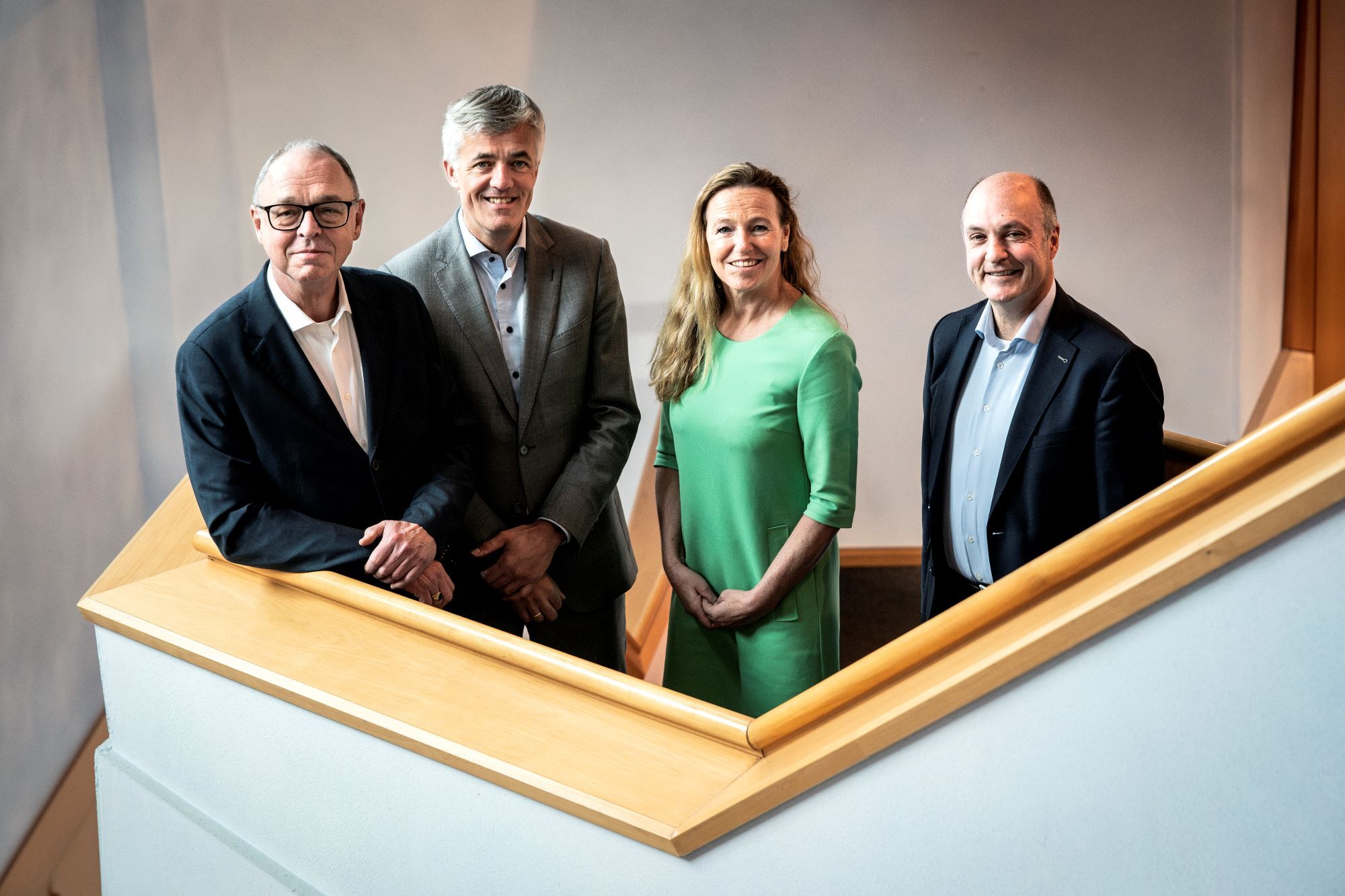Foreword by the Executive Board
Foreword by the Executive Board
Persevere, adjust and learn along the way
In the first six months of 2025, it was evident to Gasunie that the energy transition is a pathway that demands perseverance, one where you have to make adjustments along the way. The Porthos CO2 transport and storage project and the Rotterdam port hydrogen network are on track to become operational in 2026. The kilometres of pipeline in our German gas network that have been converted for the future transport of hydrogen are also growing steadily. And it is good news that our future hydrogen storage facility HyStock has been granted a provisional permit for storage.
The Dutch hydrogen transmission network and WarmtelinQ (heat transport network in the province of Zuid-Holland) have been faced with delays and higher estimated costs, which is not uncommon for the more complex, long-term projects in the infrastructure sector. Aramis (CCS) has seen changes to its shareholder structure. Storing captured CO2 is the only large-scale option open to energy-intensive industrial companies in the Netherlands for them to become more sustainable while keeping their operations in the Netherlands. As public entities, Gasunie and EBN are now taking greater responsibility for seeing the project through to completion.
Resilience
A positive development we have seen over the last six months is that the general public is becoming aware of the common ground shared by sustainability, energy security, and the competitiveness of Dutch industry, and that these aspects are becoming more closely intertwined in the public debate. Resilience has emerged as a shared concern. Ensuring resilience is no longer the sole responsibility of government bodies: it now also extends to society and the business community as well.
Gasunie is working hard with partners to shape this resilience. Investing in electrification remains essential. Our current and future transmission and transport networks, like our natural gas grid, are key in supporting this development. We will be able to use these networks later to transport green gas, and it is relatively easy to adapt these for the transmission of other sustainable molecules. By adapting these networks smartly and expanding them where necessary, this can help bring about an affordable energy transition. Moreover, molecules offer an additional advantage: they are ideally suitable for long-term energy storage, which we will need as we become increasingly dependent on solar and wind power.
Focusing on multiple forms of energy increases the certainty that there will be a sufficient supply available. At the same time, it appears that the target-focused climate policy is making way for a more realistic approach. Though even with a more realistic policy, construction of new infrastructure will remain necessary. In consideration of the long lead time of our projects, we must keep up the pace. Hydrogen, for example, remains a key pillar in all future scenarios, but this will be both ‘green’ and ‘blue’ in terms of its source, the latter requiring carbon capture. Industrial sectors like cement production will also focus on carbon capture.
It is with this in mind that we are working with a multitude of parties to develop the CCS value chain and build robust infrastructure for the transport and storage of captured CO2. Natural gas will remain important for some time yet, making further investments in infrastructure for the gas grid and LNG import terminals unavoidable.
This infrastructure can and must, of course, be designed and built in such a way that it is, as much as possible, suitable for the future use of sustainable gases like hydrogen. In light of this, complying with fill level requirements for gas storage facilities is also important, as is the blending obligation for biomethane currently being proposed. Injecting green gas into pipelines helps homes become more energy efficient at lower costs because the existing gas infrastructure can be used to accommodate demand during cold spells.
Support
We feel we have the support of our shareholder, the Dutch State. If Aramis and the future CO2 transshipment company CO2next are not yet operating at full capacity in the first years after commissioning, there is – as with the national hydrogen network – money available to cover investment costs. To give the hydrogen economy a boost, there will be a blending obligation for all 14,000 MW of Dutch gas-fired power stations, increasing from 1% in 2030 to 5% in 2035. In addition, there will be a generous incentive scheme for electricity producers who want to blend more than the minimum amount.
Gasunie intends to invest € 12 billion in energy infrastructure up to the end of 2030. We are taking measures to support keeping key industries in the Netherlands. We are taking concrete steps both to diversify the energy supply and to support these industries. By developing carbon transport and storage infrastructure, we will be able to process 50% of industrial CO2 emissions from 2030 onwards.
At the same time, we are committed to the rapid development of hydrogen infrastructure and facilitating the injection of green gas into our pipelines. While all this is happening, we will continue to manage our natural gas networks in the Netherlands and Germany as efficiently as possible to ensure security of supply. Reducing the number of work-related accidents is a high priority in this regard.
Networks for hydrogen, CO2 transport and storage, heat, and green gas form the backbone of a future-proof energy system – essential for an affordable, reliable and sustainable energy market. The choice is not either sustainability or security of supply: we need both. We do not have time to sit around and wait. We must keep moving so that we can stay on course as a company, sector and society, so that we can make course adjustments where necessary, and so that we can continue to learn along the way. Only this way can we make the energy transition a lasting success.
Willemien Terpstra, Bart Jan Hoevers, Hans Coenen and Jan Boekelman
